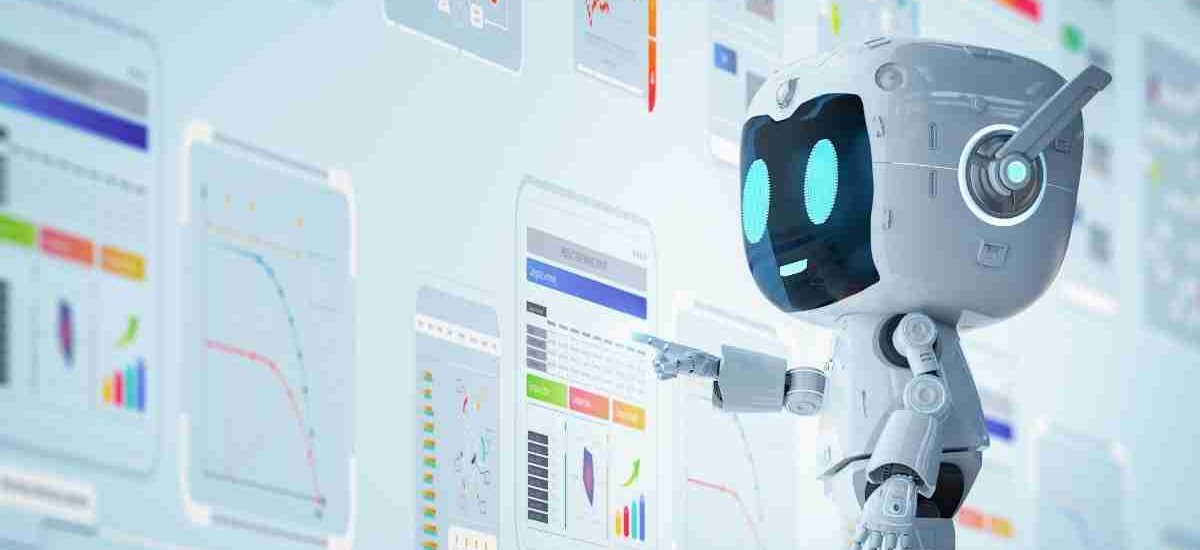So What is Willow Chip ? Quantum computing has long been a buzzword in the tech world, often shrouded in mystery, intrigue, and futuristic promises. However, recent advancements in quantum technology have begun to make those promises a reality. Google’s latest development, the Willow chip, stands as a monumental milestone in this rapidly evolving field. This chip is capable of performing computations in mere minutes that would take classical supercomputers an inconceivable ten septillion years to complete. The magnitude of this achievement is not only a testament to the incredible potential of quantum computing but also a harbinger of transformative changes in various industries.
In this article, we will dive deep into the significance of Google’s Willow chip, explain the core principles of quantum computing, compare it with traditional computing, and explore its potential applications and risks. By the end, you’ll understand why Willow is a game-changer and what its implications could mean for the future of technology.
Understanding Quantum Computing
To fully appreciate the groundbreaking nature of the Willow chip, it’s essential to first grasp the fundamentals of quantum computing. At its core, quantum computing utilizes the principles of quantum mechanics, the branch of physics that deals with the behavior of subatomic particles. Quantum mechanics allows particles like electrons and photons to exist in multiple states at once—a phenomenon known as superposition—which classical computers simply cannot replicate.
Traditional Computing vs. Quantum Computing
In classical computing, the smallest unit of data is a bit, which can exist in one of two states: 0 or 1. These bits form the basis of all digital data processing, from simple calculations to complex algorithms. Classical computers process these bits in a linear sequence, relying on the processing power of increasingly advanced hardware to perform calculations at ever-increasing speeds.
Quantum computers, on the other hand, use quantum bits or qubits. A qubit can exist in multiple states simultaneously, meaning it can be both 0 and 1 at the same time (thanks to superposition). This ability to perform multiple calculations in parallel gives quantum computers the potential to solve specific problems exponentially faster than classical systems.
To put it simply, classical computers are like very fast and very precise calculators, while quantum computers are more akin to incredibly powerful and efficient problem-solving machines capable of handling an unimaginable number of variables at once.
The Significance of Qubits
The concept of qubits is the cornerstone of quantum computing and is what sets it apart from classical computing. Because qubits can exist in multiple states at once, quantum computers can perform many calculations in parallel, which accelerates problem-solving for highly complex tasks.
Moreover, qubits have an additional property known as entanglement, where the state of one qubit can be instantly correlated with the state of another, regardless of the distance between them. This enables quantum computers to solve problems that involve massive amounts of data or variables in a fraction of the time it would take a traditional supercomputer.
However, working with qubits is not without its challenges. Quantum computers are incredibly sensitive to their environment, and even the slightest disturbance can introduce errors in calculations. This is why error correction and stability are critical aspects of quantum computing development.
What is Willow Chip: Key Features
Now that we have a basic understanding of quantum computing, let’s take a closer look at Google’s Willow chip, which has made waves in the tech world for its performance and capabilities. The Willow chip represents a giant leap forward in the development of practical quantum computers. Here are some of the key features that set it apart:
1. Advanced Error Correction
One of the most significant challenges in quantum computing is the high error rates associated with qubits. Due to their fragile nature, qubits are highly susceptible to environmental interference, leading to computational errors. In classical computers, error correction is a straightforward task, but in quantum computing, it is much more complex.
Willow, however, incorporates advanced error correction mechanisms that help mitigate this issue. Through the use of quantum error correction codes, Google has managed to keep the error rates below a critical threshold, which is essential for scaling up quantum computers. This is a major breakthrough, as it makes it more feasible to build larger and more reliable quantum systems in the future.
2. Unprecedented Speed and Power
Perhaps the most mind-boggling aspect of the Willow chip is its speed. The chip can solve problems that would take classical supercomputers an unfathomable ten septillion (that’s 10,000,000,000,000,000,000,000,000) years to compute, in just five minutes.
This achievement highlights the potential of quantum computers to dramatically outperform traditional supercomputers. For instance, the most powerful classical supercomputers, such as those used for weather forecasting or climate modeling, take days or even weeks to solve complex problems. Willow’s ability to perform the same task in minutes opens up entirely new possibilities for rapid simulations and complex problem-solving across industries.
3. Scalability
Another crucial feature of Willow is its potential for scalability. One of the major hurdles in quantum computing has been the ability to add more qubits to a quantum processor without exponentially increasing the error rates. Willow’s design tackles this challenge by optimizing the qubit architecture and maintaining stability as more qubits are added.
The ability to scale quantum systems is essential for their long-term viability and usefulness. As quantum computing becomes more powerful, we can expect it to solve increasingly complex problems in fields ranging from drug discovery to climate modeling and beyond.
Practical Applications of Quantum Computing
While the technical achievements of the Willow chip are impressive in their own right, the real excitement lies in the practical applications of quantum computing. Below, we explore several industries that stand to benefit from the breakthroughs enabled by Google’s Willow chip.
1. Drug Discovery and Material Science
Quantum computing has the potential to revolutionize the pharmaceutical and materials science industries by enabling faster and more accurate simulations of molecular interactions. Traditional computers struggle to model the behavior of molecules and their interactions because of the vast number of variables involved. Quantum computers, on the other hand, can process these complex simulations in a fraction of the time.
In drug discovery, for example, quantum computers could simulate the behavior of thousands of potential drug compounds in real time, speeding up the development of new treatments for diseases like cancer, Alzheimer’s, and more. Similarly, in materials science, quantum computers could help design new materials with specific properties, from stronger metals to more efficient solar cells.
2. Optimization Problems
Many industries face complex optimization problems that involve finding the best solution from a large set of possibilities. These include logistics (like optimizing delivery routes), finance (such as portfolio optimization), and manufacturing (for efficient production schedules).
Quantum computing’s ability to analyze vast amounts of data and process multiple variables simultaneously makes it an ideal candidate for solving these problems. With the Willow chip, businesses could optimize their operations in ways that were previously unimaginable, leading to cost savings, improved efficiency, and better decision-making.
3. Cryptography and Cybersecurity
Perhaps one of the most widely discussed implications of quantum computing is its potential impact on cryptography. Modern encryption systems, such as RSA, rely on the difficulty of factoring large numbers into primes. However, quantum algorithms like Shor’s algorithm can perform this task exponentially faster than classical computers, potentially rendering current encryption methods obsolete.
This has major implications for cybersecurity, as it could allow quantum computers to break into secure systems and decrypt sensitive data. As a result, the cybersecurity industry is already working on developing post-quantum cryptography—encryption methods that are resistant to quantum attacks. The development of Willow and other quantum processors is accelerating these efforts, ensuring that data remains secure even in a quantum world.
Assessing the Risks of Quantum Computing
While the potential benefits of quantum computing are exciting, they come with certain risks. The most immediate concern is its impact on cybersecurity. As mentioned earlier, quantum computers have the potential to break current encryption systems, which could lead to data breaches and security threats on an unprecedented scale.
However, these risks are being actively addressed by researchers, who are already working on post-quantum cryptography solutions. In the long term, the rise of quantum computing may even make it possible to develop entirely new encryption methods that are far more secure than anything currently available.
Strategies to Mitigate Risks
As quantum technology continues to advance, several strategies can help mitigate the associated risks:
1. Post-Quantum Cryptography
As quantum computers threaten traditional encryption systems, the focus has shifted toward developing cryptographic algorithms that can withstand quantum attacks. These post-quantum cryptographic systems rely on mathematical problems that are believed to be hard for quantum computers to solve, ensuring that sensitive data remains protected.
2. Ongoing Research and Collaboration
The rapid development of quantum computing calls for continuous research and collaboration between governments, tech companies, and academic institutions. By establishing regulatory frameworks and ethical guidelines, we can ensure that quantum technology is used responsibly and securely.
Conclusion
Google’s Willow chip is a groundbreaking achievement in the field of quantum computing, showcasing the immense potential of this technology. With its ability to perform computations in minutes that would take classical supercomputers millennia to complete, Willow represents a paradigm shift in how we approach problem-solving and innovation across industries.
As quantum computing continues to evolve, it promises to transform everything from drug discovery and material science to cryptography and optimization. However, with great power comes great responsibility, and we must remain vigilant about the risks associated with this new technology.
By embracing both the opportunities and challenges of quantum computing, we can ensure that Willow and its successors pave the way for a future that is as secure, ethical, and transformative as possible.
Stay tuned for more updates on quantum computing and its potential to reshape the world as we know it!
See More Ai news Hire











